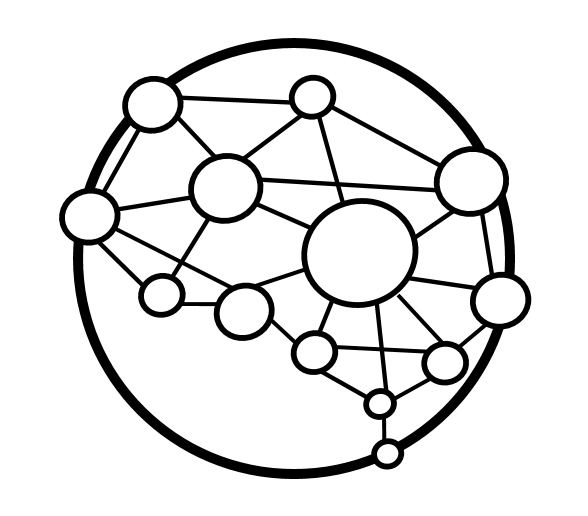Neuropathology is the study of diseases of the brain, spinal cord, and nerves. Neuropathologists diagnose and study samples of the nervous system taken both at the surgery and in the course of a post mortem evaluation. Like other organs, the brain and spinal cord develop tumors, are affected by infectious processes such as viruses and bacteria, and can develop a whole host of disorders including disorders which are unique to the nervous system such as neurodegenerative disorders like Alzheimer's disease and Huntington's disease. Neuropathology is a multidisciplinary field which relies heavily upon interactions with Neuroradiologists, Neurologists, and Neurosurgeons. Individual patients are evaluated in a clinicopathological format where the evaluation of radiologic studies such as MRI's and clinical examinations are critical to the final diagnoses.
Experimental neuropathology also covers a broad range of topics including neoplastic, inflammatory, genetic, and neurodegenerative disorders. Neuropathological research can be primarily basic science research such as protein biochemistry and molecular genetics or it can entail case studies which examine individual patients or groups of patients with similar abnormalities. The major focus of much of experimental neuropathology is to determine the biological mechanisms of neurologic disease, in order to develop strategies to prevent or treat them.
-
The Neuropathology Laboratory at Vanderbilt offers specialized analysis and procedures for neurosurgeons, neurologists and pathologists. The laboratory provides quick turn-around on diagnostic procedures, telephone consultation, and detailed written reports on all cases. The services offered are detailed below.
Storage and Transport of Materials
For muscle biopsies, muscle specimens may be sent fresh or frozen accompanied by formalin and/or glutaraldehyde-fixed samples. A detailed protocol for preparation of muscle and nerve biopsy specimens is available through Vanderbilt Medical Laboratories (VML).
Submission of clinical history and, where relevant, CT scans, MR images greatly facilitate the analysis of cases.
VPLS provides protocols for handling and transporting all tissue specimens plus containers for shipping when indicated.
For more information or assistance in ordering any laboratory test, please visit the VML site or call:
(615) 936-0510 or (800) 551-5227
-
Particular interest and experience in neurosurgical pathology of central nervous system combined with support from an array of histological, immunohistochemical and electron microscopic techniques provide a variety of capabilities for evaluating problem neurosurgical cases including:
- Lower-grade glial neoplasms versus reactive gliosis
- Higher-grade glial neoplasms versus unusual metastatic tumors or pleomorphic xanthoastrocytomas
- Gangliogliomas versus harmartomas or desmoplasmic astrocytomas
- PML versus HIV encephalitis or toxoplasma encephalitis
- Multiple sclerosis or related demyelinating diseases versus glial neoplasms
-
Diagnostic procedures available for muscle biopsies include histological and histochemical evaluations. These analyses are particularly helpful in differentiating:
- Inflammatory myopathies
- Inflammatory myopathies
- Congenital myopathies
- Neurogenic muscle atrophy
- Inclusion body myositis
- Metabolic and mitochondrial disorders
For immunohistochemical testing in the setting of dystrophic myopathy, tissue is sent for external staining and consultation. Biopsies requiring electron microscopy analysis are also sent for external consultation.
-
Diagnostic procedures available for peripheral nerve biopsies include histochemical stains for primary myelin loss, primary axon loss, vasculopathies or vasculitis. These procedures are helpful in evaluating and differentiating:
- Chronic or acute demyelinating neuropathies
- Primary axonopathies
- Vascular neuropathies
-
Particular interest and experience in the area of neurodegenerative disorders also make unique diagnostic capabilities available for evaluation of post-mortem tissue to distinguish:
- Alzheimer's disease versus vascular dementia, multi-infarct dementia, frontal lobe dementia, Pick's disease, diffuse Lewy body disease or Dementia Lacking Distinctive Histopathology (DLDH); Huntington's disease
- Parkinson's disease versus diffuse Lewy body disease, progressive supranuclear palsy (PSP) or striatonigral degeneration
- Evidence for familial or hereditary neurodegenerative disorders; information pertinent to individual or family genetics counseling
- Neuropathology Mailing Information and Specimen Handling
- Microscope slides, formalin-fixed tissue or paraffin embedded blocks may be submitted according to standard consultation protocols for neurosurgical and autopsy cases

